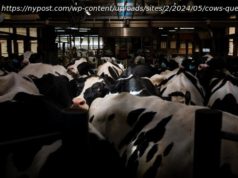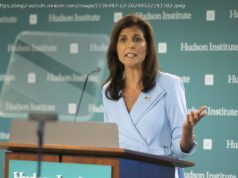For the first time, the British university released data about its admissions, and the figures showed a continuing gap in prospects along racial and economic lines.
LONDON — The 19th-century poet Matthew Arnold spoke of its “dreaming spires.” The honeyed stonework of its colleges has drawn the global elite of learning to its quadrangles and tranquillity, as have the Ivy Leagues.
Yet the University of Oxford has long been roiled by questions of race, inequality and privilege swirling through British society, from the mean city streets and neglected social housing projects to the glittery, obsessively chronicled romances and rigmarole of the royal family.
Some of the conundrums about who gets to be an Oxford undergraduate surfaced anew on Wednesday when, for the first time, the 850-year-old university published data intended to challenge assertions that it endured as a place of white, wealth-driven privilege.
For some, the figures showed only halting progress: About 3 percent of the British population is black, according to the most recent census, but only 1.9 percent of the roughly 3,200 students admitted to Oxford in 2017 identified as black Britons.
That was an increase of less than a percentage point from 2013, when 1.1 percent of British undergraduates at Oxford identified as black, a subset of what the university called “black and minority ethnic” students, including those of Asian and mixed heritage, whose share of admissions rose to 17.9 percent last year, from 13.9 percent in 2013.
David Lammy, a Labour lawmaker and former education minister who has campaigned against what he has called “social apartheid” at Oxford, said the latest figures showed that the university was “an institution defined by entrenched privilege that is the preserve of wealthy white students from London and the Southeast.”
The statistics do offer some startling insights: In a breakdown of undergraduate admissions to the 29 individual colleges that form the backbone of Oxford’s academic structure, eight — including some of the most prestigious — failed to admit a single black Briton in one or more of the years from 2015 to 2017.
Cherwell, a student newspaper at Oxford, reported on Wednesday that the university had admitted more students in 2017 from a single London private school, 49, than it had admitted black undergraduates from the rest of Britain, 48.
That appeared to compound other inequalities, such as the preponderance of students from fee-paying private schools — known in Britain as public schools — in the south of England among the annual intake of more than 3,200 undergraduates. And among the slowly increasing number of successful applicants from state schools, the statistics were skewed because they did not show how many undergraduates had been educated at state-financed grammar schools, which have selective entrance criteria.
Oxford’s intake displayed a geographic imbalance between the north of Britain and the more affluent south, where the bulk of national wealth is concentrated.
“Oxford reflects the inequalities — socio-economic, ethnic and regional — that exist in British society,” Louise Richardson, the university’s vice chancellor, said in a foreword to the report.
“The picture that emerges,” she said, “is of a university which is changing: evolving fast for an institution of its age and standing, but perhaps too slowly to meet public expectations. It is a picture of progress on a great many fronts, but with work remaining to be done.”
In a section titled Key Points, the report focused on progress in admissions, including “more women admitted than men in 2017” and higher proportions of undergraduate admissions among groups that were traditionally disadvantaged.
Yet, according to the Cherwell article, “17 of the top 20 schools for Oxford admissions in 2017 are fee-paying, while the other three are prestigious grammar schools.” Additionally, the newspaper said, state-educated students tended to apply to the most oversubscribed subjects, lowering their prospects, while applicants from private schools tended to apply to less sought-after courses, such as classics or modern languages.
At the heart of the debate is a perceived contest between demographics and academic excellence. Critics such as Mr. Lammy, the Labour lawmaker, argue that a student from a low-income area who gets good grades on the national A-level exams at the end of high school “is more talented than their contemporary with the same grades” at a top fee-paying school such as Eton or Harrow. “And all the academic evidence shows that they far outshine their peers at university, too,” he said.
“If you’re on the 20th floor of a tower block estate and you’re getting straight As,” Mr. Lammy told the BBC, “you apply, go for a difficult interview,” and then, he added, if the application is unsuccessful, “none of the other kids apply the following year.”
The reference to public housing seemed to signal Britain’s broader disparities at a time when its news agenda has been dominated by poles of privilege and perceived neglect. On Saturday, the nation — and much of the TV-viewing world — paused to watch the spectacular wedding at Windsor of Prince Harry and Meghan Markle. On Monday, the focus shifted to the opening of a public inquiry into the Grenfell Tower disaster, when a 24-story building in West London was consumed by fire, leaving 72 dead.
In an effort to help disadvantaged applicants, Oxford announced on Wednesday that it would increase to 1,350, from 850, the number of would-be undergraduates it admits to one-week summer courses to help them apply.
“To state the obvious,” Alan Rusbridger, the principal of Lady Margaret Hall college and a former editor of The Guardian newspaper, wrote on Wednesday, “it’s hard to win a place at Oxford.” Last year, for instance, almost 20,000 applicants chased 3,270 places. “A great many academically able students will not be offered a place.”






